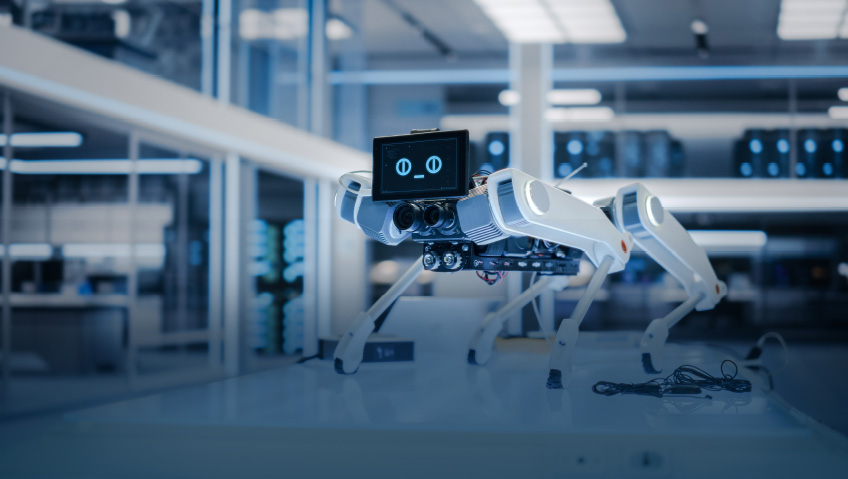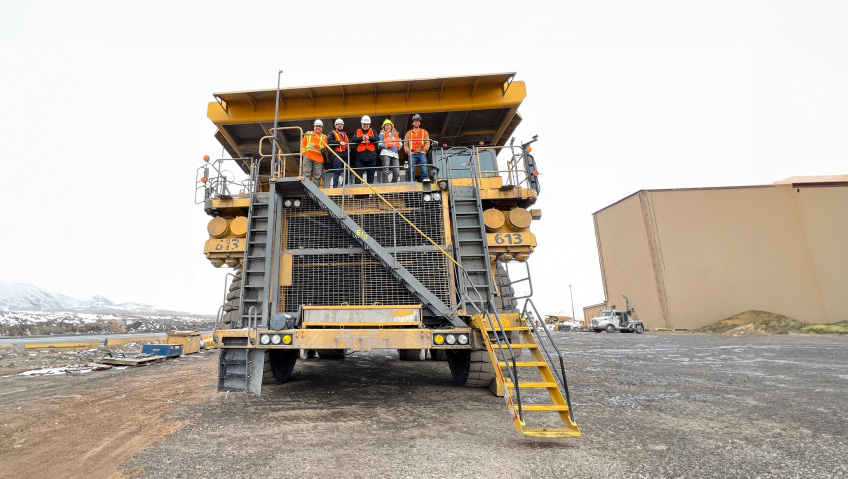The traditional power grid wasn’t built to be smart. It was built with one purpose in mind: generate massive amounts of power in a few locations and get that power as efficiently and reliably as possible to users.
Transforming the way power is generated and distributed isn’t a small task. It’s like transforming a nationwide network of cart paths into a highway system that can accommodate today’s traffic. But the world is changing, and the way we generate and consume energy is changing, too.
There is growing demand—and greater urgency—to transition to renewable energy sources; that’s a good thing. But energy generated from sustainable sources like solar and wind is far less consistent than that from fossil fuels. There are peaks and valleys that the traditional grid was not built to handle.
Customers are demanding more from producers, too. They want the ability to consume power at times when it is in less demand and therefore less expensive. Furthermore, the widespread and growing popularity of electric vehicles has created unpredictable changes in demand to which utilities everywhere are struggling to adapt.
On top of that, there’s the emergence of the ‘prosumer’—a portmanteau formed from the words ‘producer’ and ‘consumer’. Prosumers are able to generate electricity from solar or wind installations on their own properties and sell it back into the grid, or even directly to other consumers.
And, of course, weather patterns are changing at the global level. Storms are more frequent, more damaging, and less predictable than in the past. It’s more difficult for power utilities to keep the lights on and to know where to put maintenance resources.
None of these changes—those emerging from the market or from the natural environment—would be manageable without the development of the smart grid.
In simple terms, a smart grid is defined by a two-way flow of both energy and data. Energy flows to the user; data is generated and flows back, showing how that power is being used.
The introduction and development of the smart grid was a significant leap forward. It enabled utilities to manage the grid more effectively and reliably, optimizing the way in which power is generated and transmitted. And it provided an element of control to the consumer; with more data about how they use power, they can make choices to use it more efficiently and save money.
For all its benefits, the smart grid still had a bottleneck: data. More specifically, the ability of legacy systems to gather, analyze, and derive meaningful insights from the staggering amount of data generated by the smart grid.
There are literally millions of data points and millions more variables; it’s not just a matter of how many times per second calculations can be done, or switches flipped on or off. The full potential of the smart grid can only be realized when a system is able to make intelligent decisions based on all the data. And that’s something that yesterday’s systems, let alone humans, simply can’t do.
That’s where artificial intelligence (AI) comes in. Yes, AI technologies can interpret data in volumes that would have been difficult to comprehend even just a few years ago. But the real power of AI lies in its ability to learn from that data—getting better at understanding it and using it to make better decisions.
Machine learning applies mathematical models to massive datasets, looking for trends and patterns. Deep learning—a subset of machine learning—uses multi-layered neural networks to analyze this data more deeply. Machine learning and deep learning have the potential to turn the smart grid’s step forward into a giant leap.
The amount of money being invested in these technologies is just as significant as the amount of data they work with. According to a 2023 report by www.researchandmarkets.com, investment in AI technologies specific to the energy and power sectors will climb from $3.1 billion (USD) in 2021 to over $14.5 billion in 2028.
Although some of that will be private capital, the public sector is also getting involved. In 2023, the Department of Energy announced $3.46 billion in funding for 58 projects across the United States with the objective of using these technologies to make electricity grids more resilient and reliable. Shortly afterwards, a second round of funding for these projects—to the tune of $3.9 billion—was announced by the federal government.
Why so much interest, and so much money? Because AI has the potential to revolutionize the way we generate, distribute, and use electricity.
Consider renewable energy. Wind energy is generated when turbines move, as is tidal power. Solar power is generated when the sun is shining. There’s even a name for this latter dynamic: the ‘duck curve’. If you graph solar power generation through the course of a day, the resulting line looks remarkably like the profile of a duck.
Unfortunately, peaks in renewable power generation don’t often conveniently align with a corresponding demand. That means power must be stored and released at a time when it’s needed. A smart grid powered by AI can make decisions that help to rebalance production and consumption.
This isn’t to suggest that a shift to renewable power wouldn’t be possible without AI. But the application of AI will allow utilities to integrate more renewable energy while keeping delivery consistent and reliable.
The prevalence of smart meters—energy meters that feed usage data back through the grid—is the foundation for greater understanding and control on the part of consumers. As of 2022, electric utilities across the United States had about 119 million smart meters installed, which is about 72 percent of all electric meters in the country. According to Natural Resources Canada, the adoption rate is even higher north of the border, with smart meters representing over 82 percent of all meters.
With those meters in place, it’s possible for users to collect data for every single outlet and appliance in the home. With data that granular, a power consumer can make decisions that reduce their consumption overall. And of course, that homeowner can also track and analyze their energy use over time, providing an incentive and a reward for reducing consumption.
Another possibility that AI offers users is the potential to become more active prosumers. Currently, in most of North America, power that is generated by individuals (e.g. solar power generated by household rooftop installation) is fed directly into the grid. While the prosumer sees the benefit in the form of reduced power bills, the transaction is still strictly between the utility and the user. Peer-to-peer energy trading could change that, providing the opportunity for individual prosumers—residential or commercial—to trade electricity directly. Legacy systems could never handle the kind of data processing and decision making that would be required to manage these microtransactions, but artificial intelligence can.
AI doesn’t just benefit consumers; the technology also offers utilities a wealth of ways to operate more efficiently, reliably, and profitably.
Predictive analytics, simply stated, is using data to predict future outcomes. The more data points, the more accurate that forecast is likely to be. Smart grids are capable of producing nearly infinite numbers of data points; at some point the question is whether you have the ability to process and analyze it and use it to make decisions. Once again, AI has the ability to do this at a level far greater than older technologies.
AI can be used to identify patterns of higher and lower demand and can automatically shift between different energy sources. In doing so, it can identify the most cost-effective distribution in that circumstance, and also avoid overloading the grid in periods of high demand. Rather than relying on a static formula, these systems learn. They can adapt over time, ensuring that the decisions are constantly optimizing the grid.
With sensors throughout the grid gathering and delivering data, AI can also identify disruptions or anomalies far sooner than humans or legacy computer systems, reducing the likelihood of outages and their duration when they do occur.
Severe weather events are becoming more frequent, and AI technologies are also providing utilities with better data about environmental factors that affect the power network. Extreme temperatures, high winds, and extraordinary precipitation events all play havoc with power lines and other transmission equipment, but with AI comes more accurate forecasts. AI can also help utilities to make decisions about proactive measures to protect equipment, and to repair it more quickly.
Power generation, transmission, and distribution have already come a long way from where they started. AI technologies will make the smart grid much smarter, allowing consumers and utilities alike to use energy more efficiently and enabling more widespread use of renewable electricity.






